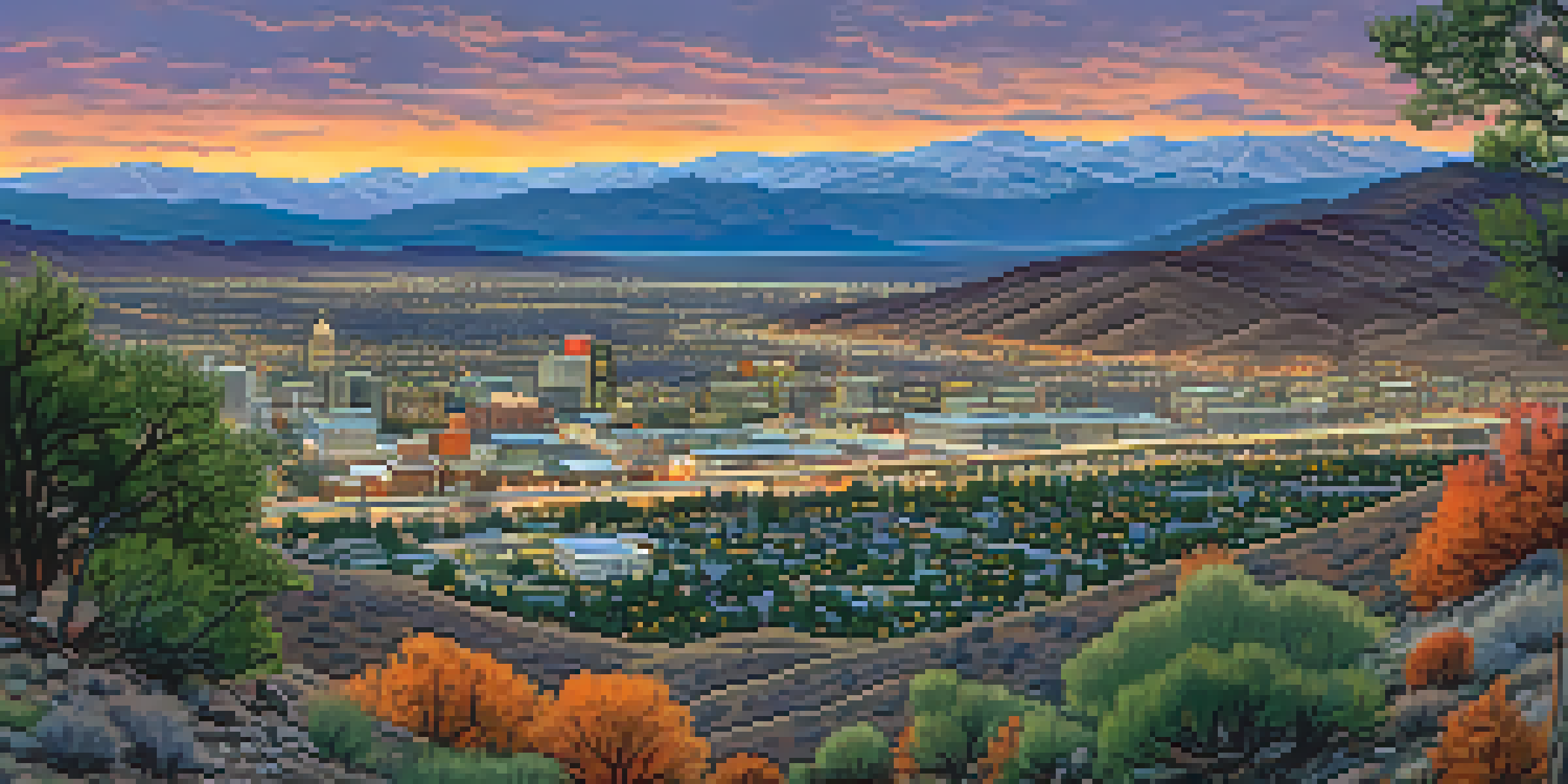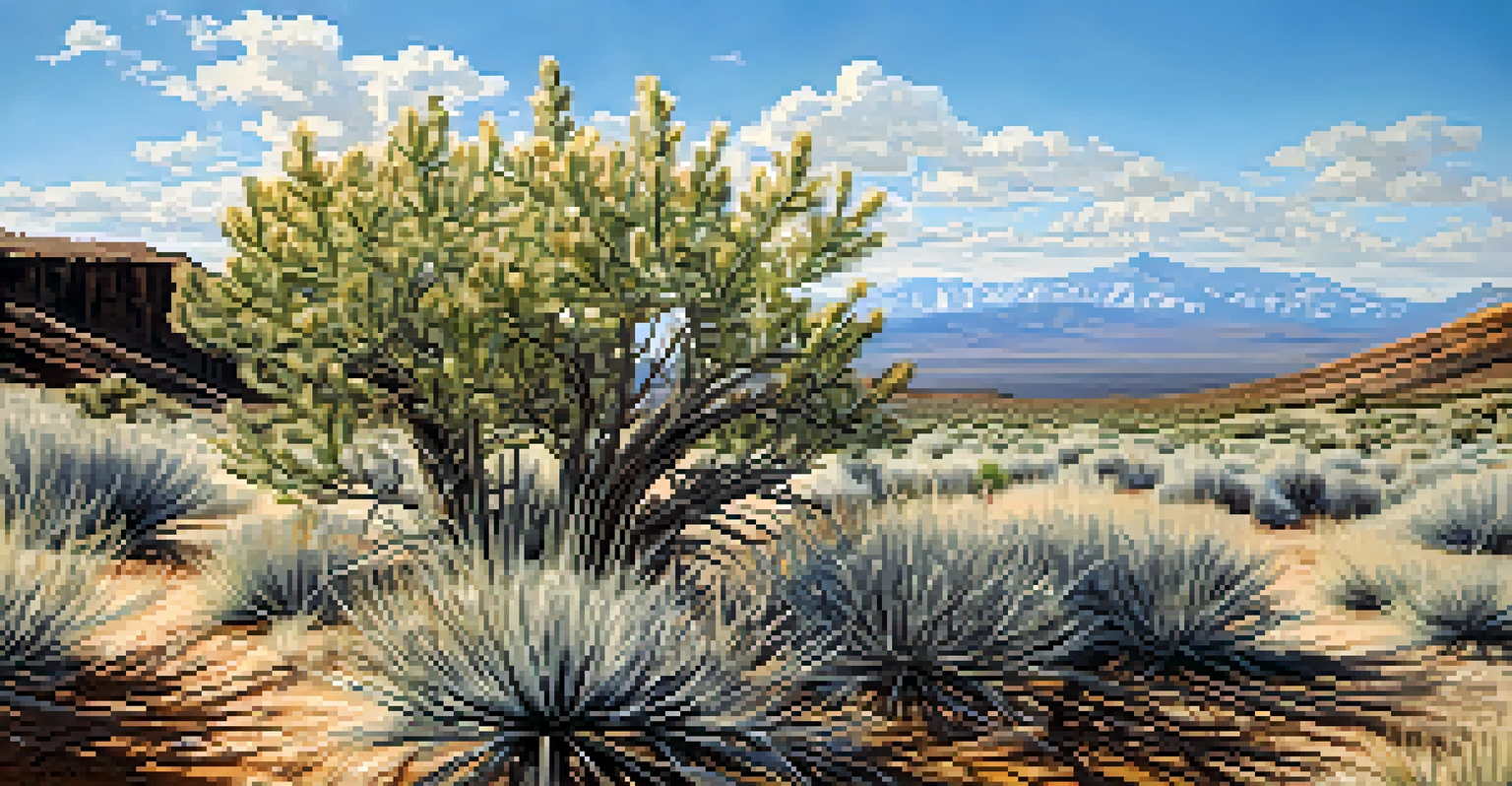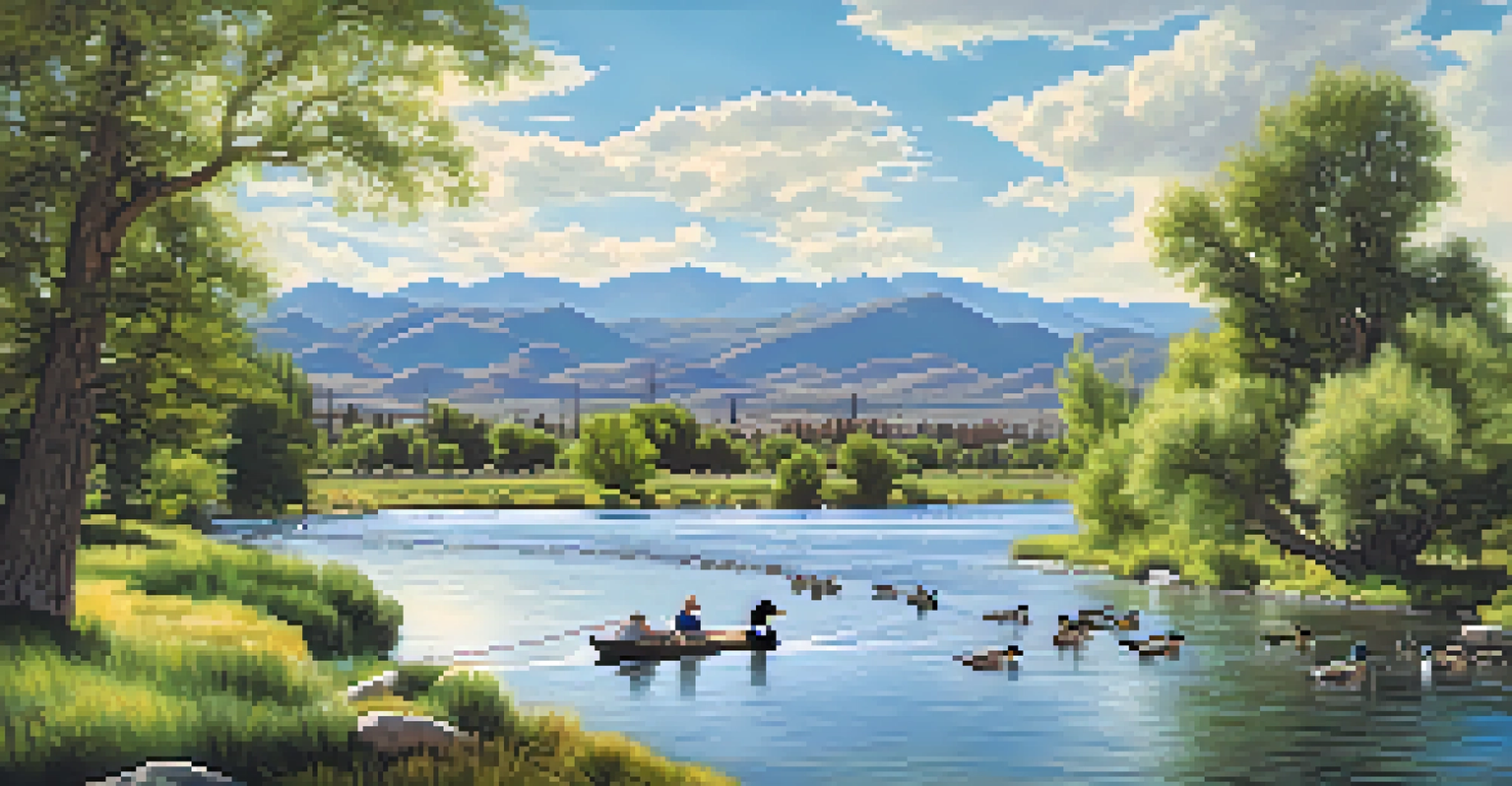The Role of Geography in Reno's Unique Ecosystem and Wildlife

Reno's Geographic Location and Its Significance
Reno, often referred to as 'The Biggest Little City in the World,' is nestled in the Sierra Nevada mountains. This strategic location not only provides stunning vistas but also creates a unique climate that influences local wildlife. The elevation and proximity to both mountains and desert contribute to a diverse range of habitats, making it a hotspot for various species.
The environment is where we all meet; where we all have a mutual interest; it is the one thing all of us share.
The geographical layout of Reno means that it experiences distinct weather patterns, with cold winters and hot summers. This variation in temperature affects the types of flora and fauna that can thrive in the area. For example, the interplay between the mountains and the desert creates a mosaic of ecosystems, from lush forests to arid landscapes, each supporting different wildlife populations.
Understanding Reno's geography allows us to appreciate how these natural features contribute to the city's ecological diversity. The surrounding mountains not only serve as a backdrop but play a crucial role in water drainage and snowmelt, further influencing the habitat availability for various animal species.
The Influence of Elevation on Biodiversity
Elevation is a key factor in Reno's ecosystem, affecting everything from temperature to vegetation types. As you ascend into the Sierra Nevada, you'll notice a shift in both plant and animal life. This vertical diversity means that species adapted to different elevations can coexist, creating rich biodiversity that is influenced by altitude.

For instance, at lower elevations, you might find sagebrush and desert shrubs, while higher up, conifers like pines and firs dominate the landscape. This gradient allows for a variety of ecosystems to flourish, each supporting distinct wildlife. Animals like mule deer and mountain lions roam the forested areas, while birds such as the sage grouse thrive in the lower shrublands.
Reno's Unique Geography and Climate
Reno's strategic location in the Sierra Nevada mountains creates diverse ecosystems influenced by its distinct weather patterns.
Thus, the elevation of Reno not only defines the physical landscape but also plays a pivotal role in maintaining ecological balance. By preserving these varied habitats, we ensure the survival of numerous species that rely on specific environmental conditions.
Water Sources: Rivers and Their Impact on Wildlife
Reno is crisscrossed by rivers and streams, the most notable being the Truckee River. This waterway is essential for both the city's ecosystem and its residents. The river provides vital hydration for wildlife and plants, creating lush riparian zones that offer shelter and food for numerous species.
In nature's economy, the currency is not money, it is life.
Furthermore, the Truckee River serves as a corridor for migratory birds and fish. Species like the Lahontan cutthroat trout rely on clean, flowing water for their life cycles. The health of this river directly impacts the overall biodiversity in the area, showing how interconnected everything is within the ecosystem.
By safeguarding these water sources, we not only protect the wildlife that depends on them but also enhance the natural beauty of Reno. These aquatic habitats are crucial for maintaining ecological integrity and supporting the rich tapestry of life that thrives in and around the city.
The Role of Climate in Shaping Ecosystems
Reno's climate is characterized by its semi-arid conditions, which significantly affect the local ecosystems. With less precipitation than many other regions, the flora and fauna have adapted to survive in drier conditions. This resilience is evident in the presence of drought-tolerant plants and animals that thrive in this environment.
The seasonal variations in climate also dictate the behavior of wildlife. For example, many animals in the area exhibit migratory patterns in response to changing temperatures and food availability. Understanding these climate influences is essential to grasping how wildlife adapts and thrives despite environmental challenges.
Biodiversity Driven by Elevation
The elevation changes in Reno foster a rich biodiversity, allowing various species to thrive in different habitats.
Moreover, as we face changing climate patterns globally, the effects on Reno's unique ecosystems will become increasingly important. Conservation efforts must consider how climate change may alter these established patterns, ensuring that local wildlife can continue to flourish.
Human Impact on Reno's Natural Environment
As Reno has grown, urban development has inevitably impacted its natural ecosystems. Construction and expansion of infrastructure can lead to habitat loss, which poses a significant challenge for local wildlife. It’s crucial to recognize how our actions can disrupt the delicate balance of nature that has existed for centuries.
However, there are ongoing efforts within the community to mitigate these impacts. Initiatives aimed at reforesting areas, protecting wildlife corridors, and restoring natural habitats are vital for ensuring that both residents and wildlife can coexist harmoniously. Engaging the community in these efforts fosters a sense of stewardship for the environment.
Ultimately, understanding the human impact on Reno's ecosystems can inspire more sustainable practices. By prioritizing conservation and responsible development, we can help preserve the natural beauty and biodiversity that make Reno a unique place to live and thrive.
Key Species in Reno's Ecosystem
Reno's diverse ecosystems are home to a variety of key species that play important roles in maintaining ecological balance. For instance, species like the red-tailed hawk and the peregrine falcon are not only magnificent to observe but also important predators that help control rodent populations. Their presence indicates a healthy environment.
Additionally, the area is known for its unique populations of plants, such as the Nevada sagebrush, which provide essential habitat and resources for many animal species. These plants are adapted to the local climate and soil conditions, showcasing the intricate relationships between flora and fauna in Reno’s ecosystem.
Human Impact and Conservation Efforts
Urban development poses challenges to Reno's ecosystems, but community conservation initiatives are crucial for preserving local wildlife.
Protecting these key species is critical for the overall health of the ecosystem. By focusing on conservation efforts for these vital players, we can ensure that Reno's natural beauty and ecological diversity continue to thrive for future generations.
Conservation Efforts in Reno's Ecosystems
With growing awareness of environmental issues, conservation efforts in Reno have gained momentum. Local organizations and government agencies are actively working to protect and restore habitats crucial for wildlife. From rewilding programs to public education initiatives, there's a collective push to safeguard Reno's ecological treasures.
One notable effort includes the preservation of wetlands along the Truckee River, which serve as vital habitats for birds and aquatic life. These areas not only support biodiversity but also act as natural filtration systems that improve water quality. Community involvement in conservation projects ensures that residents feel connected to their environment.

As these efforts continue to evolve, they highlight the importance of collaboration between locals, scientists, and policymakers. By fostering a culture of conservation, we can create a sustainable future where Reno's ecosystems and wildlife can flourish.